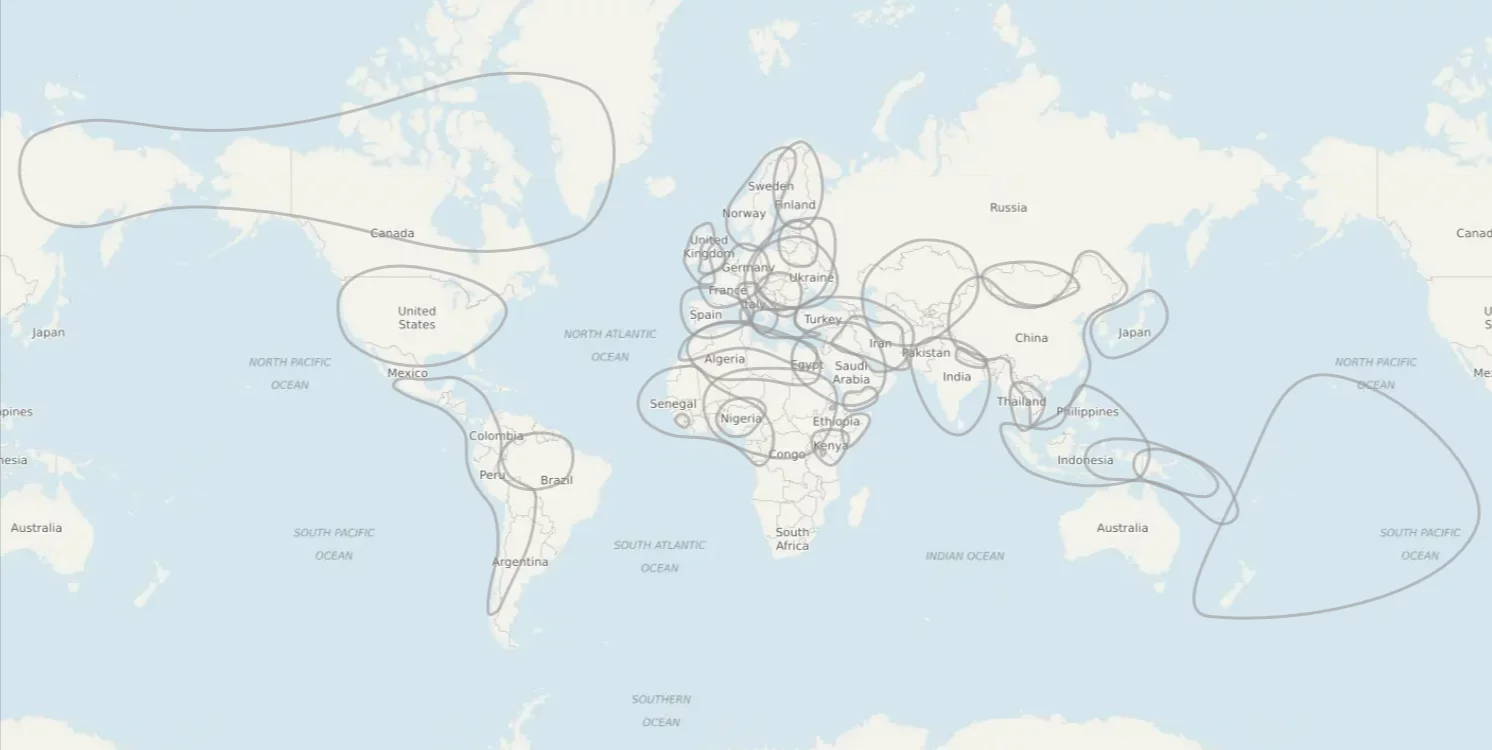
What is my ethnicity?
An ethnicity or ethnic group is a group of people who share distinct social attributes such as culture, heritage, language, history, religion, and other characteristics. Ethnicities are usually identified with a specific geographic region where their group originated.
If you have wondered what your ethnic background is, you can find out by taking a MyHeritage DNA test. Your results will include an Ethnicity Estimate: a percentage-based breakdown of your ethnic origins as indicated by your DNA results.

But how does MyHeritage know where your ancestors were from based on your genetic code?
In this article, we’ll examine how the MyHeritage DNA Ethnicity Estimate works.
Ethnicity estimates are based on DNA variation
Human beings share about 99.9% of our genetic code: the parts of our DNA that program us to have the same organs, the same type of metabolism, and other basic functions. The remaining 0.1% of our DNA accounts for the vast inborn differences between human beings: appearance, personality, and so on.
That remaining 0.1% of our DNA develops variations over time. This can happen for two reasons:
- Random mutation: Part of the genetic code spontaneously changes.
- Environmentally induced variation: People who live in a certain environment may adapt to the conditions of that region. For example, people from colder countries where there is less sun exposure developed fairer skin, which is more efficient at producing vitamin D. People from warmer, sunnier regions tend to have darker skin to provide better protection from harmful UV rays. Parents pass these genetic variations down to their children.
Through most of history, people didn’t move around very much. Populations tended to stay in one area over many generations, marrying and having children with people who lived nearby. For this reason, over many generations, certain variations become typical of a certain geographic or ethnic region. Note that an ethnic group is not always geography-based: for example, Ashkenazi Jews are a very distinct ethnic group that is separate from the typical populations of the Eastern European where they lived, because they strictly married within the group.
DNA ethnicity estimates analyze the genetic variations that are typical of each of these groups. They then compare the variations in your DNA to each of them to assess how similar your DNA is to theirs.
To accomplish this, MyHeritage needed to build models of these specific variations so we’d have something to compare your DNA to. The MyHeritage Founder Populations Project was launched with the goal of building those models.
The Founder Populations Project
MyHeritage began as a genealogy company, and by the time MyHeritage DNA was in development, the company hosted genealogical data from millions of families all over the world.
To create our models for DNA ethnicity comparison, we searched our database for users who had family trees going back at least 6 (sometimes as many as 15) generations in the same region or group. We reached out to these users and asked them to participate in the Founder Populations Project. Around 5,000 users responded, and we sent DNA kits to all of them — from Uzbekistan to Fiji, from Greenland to South Africa.
Once we received their results, we analyzed their DNA profiles to identify distinct variations characteristic to each region or group.
This was not always easy. There can be a lot of overlap, especially in neighboring regions without isolating geographic conditions, such as high mountain ranges or large bodies of water. Ultimately, we identified and built models for the 42 ethnicities from which we currently offer results.
Identifying your ethnicities… and the limitations therein
Once your DNA has been analyzed, we compare your variants to those of the models we created for each of the 42 ethnicities. Then, we aggregate the comparison results to create a percentage-based breakdown of your ethnic origins.
It’s important to understand that the Ethnicity Estimate is just that: an estimate. There are a few limitations to keep in mind regarding your results:
- Differences between DNA testing services: Some people who have tested their DNA with other companies may find that their results differ from company to company. This is because each DNA testing company has built its own ethnicity models based on their own pool of data. Even if they tested the same number of people from the same region, their models will naturally differ from each other. In general, the larger the pool of data for each ethnicity, the more accurate the model will be.
- Ethnicity estimates can only go back so far: Ethnicity Estimates are based on locations and ethnic groups going back 6–15 generations. It may accurately estimate where your ancestors were located in 1750, but not necessarily in 1350.
- Fuzzy boundaries: Due to the somewhat fuzzy and sometimes overlapping boundaries between one ethnic group and another, you may receive an Ethnicity Estimate that identifies your DNA as belonging to a neighboring ethnicity. For example, someone with Italian heritage may receive an ethnicity estimate that identifies them as South Italian and Greek, Iberian, North and West European, or Sardinian.
- Random inheritance: Remember that each child inherits a random 50% of their parents’ DNA. This may create a situation where, for example, you are absolutely certain that your grandfather was half Italian, but you yourself did not inherit any of his Italian genes. If he is 50% Italian and 50% English and your grandmother is 100% Scandinavian, your father may be 25% Italian, 25% English, and 50% Scandinavian — and the 50% you inherit from him could be 50% Scandinavian or 25% Scandinavian, 25% English. In a situation like this, you still have clear Italian heritage, but the ethnicity isn’t reflected in your DNA.
If you were expecting to see a certain ethnicity in your estimate and haven’t found it, there’s an easy way to see your “hidden” ethnicity reflected in your DNA Match results. This article can show you how.
The future of Ethnicity Estimates
Tens of thousands of people take the MyHeritage DNA test each month, and the larger the pool of data we have, the more precisely we can analyze DNA. We are constantly improving our algorithms and looking for new ways to help you discover more about where you come from. In late 2020, we introduced Genetic Groups, which provide a much higher-resolution ethnicity result that can narrow down your origins to over 2,000 ethnic regions. MyHeritage will continue to update our models and introduce more specific information about your ethnic origins so we can paint a more detailed and richer picture of your family history through your DNA.




